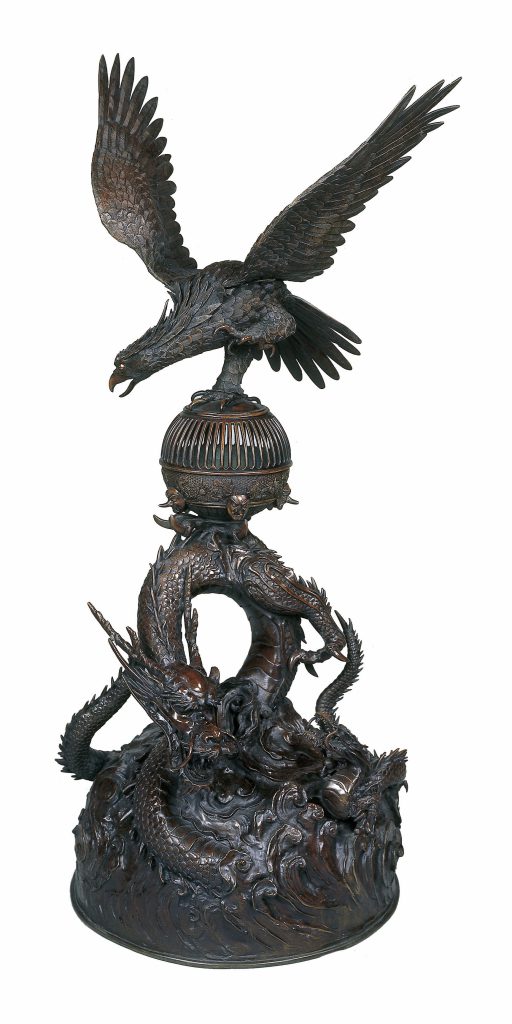



Title: Incense Burner (Koro)
Date: circa 1893
Location: Japan, Tokyo
Materials: bronze, with details in gilding and shakudo
Dimensions: height 410 cm, width 132 cm
Accession Number: MX 66
Other Notes:
This immense koro, the tallest object in the Khalili Collection, is one of the most ambitious surviving examples of the great flowering of the bronze-caster’s art that occurred during the Meiji Era. Consisting of thirteen major components, many of them, in turn, made from several separate castings, it brings together a wide variety of motifs, chiefly from Chinese legend.
As well as the flute-and-drum playing demons and the easily recognizable eagle and dragon, the low relief decoration on the sides of the container features three other creatures, the kirin, with the body of a deer, the hooves of a horse, the tail of an ox, and a single horn on its head; the ho-o bird; and the shishi. The two smaller beings on the side of the bowl are the Chinese sage Kinko, who is always shown riding on the back of a carp, and Kannon, the most popular of the bodhisattva, saintly Buddhist beings who renounce their own enlightenment, remaining on earth to relieve the suffering of mankind.
Despite the ambitious scale of this bronze, there is no mention of its maker, Hayashi Harusada, in any of the records of exhibitions held in Japan, Europe, or America during the Meiji Era. It is all the more fortunate, therefore, that a little known popular guide to the fair includes an illustration that shows visitors to the Manufactures and Liberal Arts Building admiring a similar and equally large bronze. It is tempting to imagine that the Japanese figure in the foreground might be Hayashi Harusada himself.
Bibliography:
J. Earle, Splendors of Imperial Japan: Arts of the Meiji period from the Khalili Collection, London 2002, cat. 187, pp. 271–2.
Zoom
Close

Create your own collection of artworks that you can print or save as a PDF. Please enter you email to enable feature.
Small Flask | JLY 1075
Has been added to your collection.
TIP:
You can now access and view your collection from the main menu at any time.